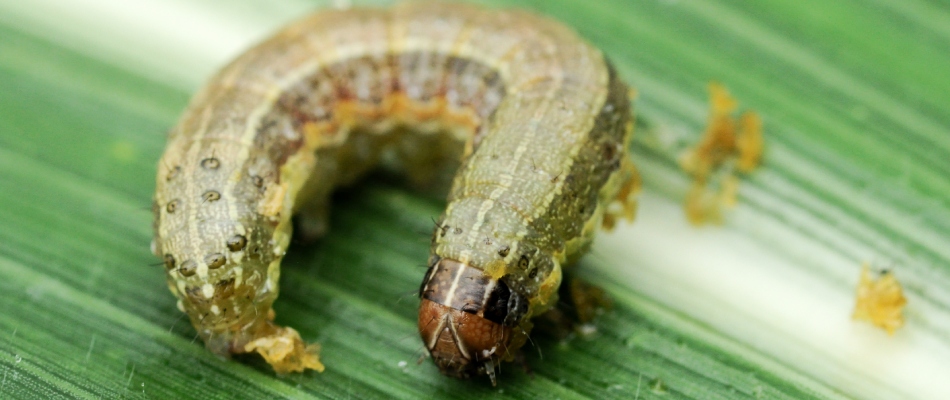Brown patches in your lawn are never a fun sight to wake up to. During the fall, the main culprit is often one of two things: drought or armyworms. To check for drought, review your watering schedule and ensure you're watering at least one inch a week. If you aren't, try watering according to that schedule and see if it makes a difference. Once you've done that, if your lawn still has brown patches, it could indicate armyworms. Common in the South and increasingly in Midwest states like Indiana, fall armyworms will leave gnaw marks on your grass blades. You may also notice increased bird activity on your property as they prey on the armyworms. The best way to know for sure is to contact a professional!
How to Test if Your Brown Patches Are Caused by Drought

Drought is one of the first things that may come to mind when you see brown patches on your lawn, and it should be relatively easy to confirm once you review your watering schedule. Are you watering your lawn every week, at least one inch of water each time? If you are, then your lawn is likely not in a drought and you can begin looking for other causes. However, if you're not watering at a rate similar to this, your lawn could be suffering from drought. A good test would be to water according to this schedule for a short time and see if you notice a difference. If the brown patches remain, there's another culprit. If the brown patches dissipate, water was the issue, and you know to keep a closer eye on the watering schedule moving forward.
Signs of Armyworms Include Bare Spots, Birds, & Brown Patches

Another cause for brown patches in the fall could be an armyworm infestation. If your lawn is regularly mowed, they'll usually stay deep in the turf and out of sight, so you'll need to turn to other methods to identify them. One of the biggest markers is gnaw marks on your grass blades, often on the edges but can also be right in the center of the blade.
Increased bird presence in your lawn is another sign – once birds catch wind that there are armyworms on a property, they'll return frequently to feast on them. The armyworms will also create bare spots on your lawn, typically cropping up around the edge of the lawn before making their way to the middle. These patches commonly have gnawed grass blades around their perimeter, and in the center, the blades look as though they've been cut off right at the base.
Although known to attack most cool and warm-season turfgrasses, the most common host of armyworms is bermudagrass.
Consult a Professional to Be Certain
When you're diagnosing an issue in your lawn, using a guessing game can be risky. If you incorrectly identify the issue, the "solution" could do more harm than good. To be certain you are correctly identifying and treating the issue, the best route is to consult a professional team. Local professionals will be intimately familiar with the specific threats in your area and their warning signs. They can quickly identify the issue and create a plan to get your lawn back to good health!
Protect your grass from threats. Call us today to schedule our services!
You see brown patches in your grass and brace yourself for the worst – but we see brown patches and get invigorated. At Grow Pros Lawn Care, LLC, providing first-rate lawn and landscape solutions in Elkhart, IN and surrounding cities like Granger and South Bend is our passion. We have services to ensure your lawn will be protected from lawn insect threats like armyworms or nourished with all the water and nutrients it needs to bounce back from drought. Whether you've identified the source of brown patches or you're unsure, call us today at (574) 326-3526 to schedule our services so we can help!

